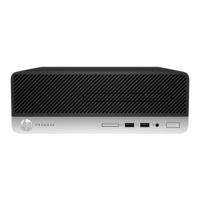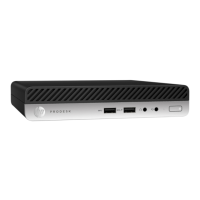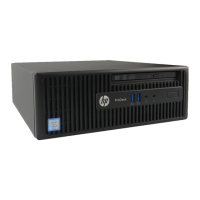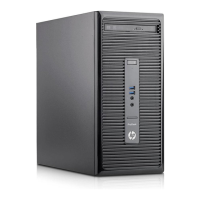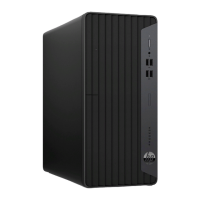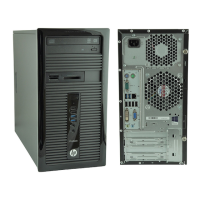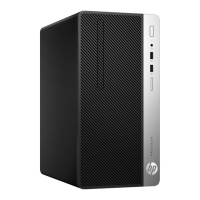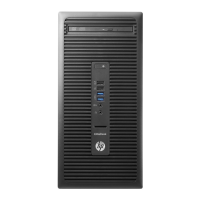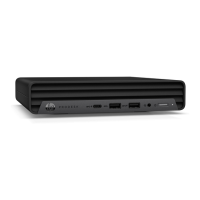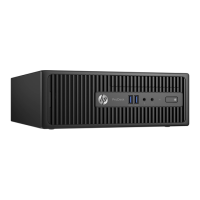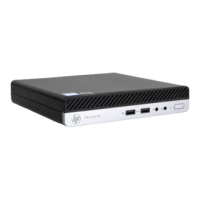
Do you have a question about the HP ProDesk 400 G5 Desktop Mini and is the answer not in the manual?
| Chipset | Intel Q370 |
|---|---|
| Memory | Up to 32 GB DDR4-2666 SDRAM |
| Operating System | Windows 10 Pro |
| Power Supply | 65 W external power adapter |
| Processor | Core™ i3, Core™ i5, Core™ i7 (8th Gen) |
| Storage | Up to 2 TB HDD |
| Graphics | Intel UHD Graphics 630 |
| Form Factor | Desktop Mini |
| Ports (Front) | 1x headphone/microphone combo; 2x USB 3.1 Gen 1 |
| Ports (Rear) | 2x USB 2.0; 2x USB 3.1 Gen 1 |
| Dimensions | 177 x 175 x 34 mm |
| Weight | 1.26 kg |
| Network | Gigabit Ethernet |
| Wireless | Bluetooth 5.0 |
Details the standard hardware and software configuration of the computer.
Identifies and describes the components located on the front of the computer.
Identifies and describes the components located on the rear of the computer.
Lists and illustrates the main internal and external components of the computer.
Lists and describes various additional parts and accessories for the computer.
Explains the risks of ESD and how to prevent damage to electronic components.
Provides essential guidelines to prevent overheating and prolong the computer's life.
Important safety warnings and precautions before performing hardware procedures.
Outlines the necessary steps to prepare the computer before opening it for service.
Instructions for removing and replacing the computer's hard drive.
Details on memory module specifications and how to remove them.
Steps for removing and replacing the computer's processor.
Detailed procedure for removing and replacing the system board.
Instructions on how to access and navigate the Computer Setup utility.
Explains security settings, including password management and TPM.
Covers advanced configuration settings for system behavior and hardware.
Steps to take to diagnose problems before contacting support.
Identifies and resolves issues related to the computer's power supply.
Addresses problems related to the computer's memory modules.
Lists and explains POST error codes, messages, and their recommended actions.
Explains how to interpret diagnostic codes indicated by LEDs and beeps.
Procedure for resetting system passwords by manipulating a jumper.
Steps to clear and reset the BIOS settings to factory defaults.
Instructions for using the Windows-based hardware diagnostic tool.
Instructions for using the UEFI-based hardware diagnostic tool.
General requirements for power cord sets applicable to all countries.
Information on how nonvolatile memory is used in the computer.
Q&A section covering BIOS, UEFI, and memory.
